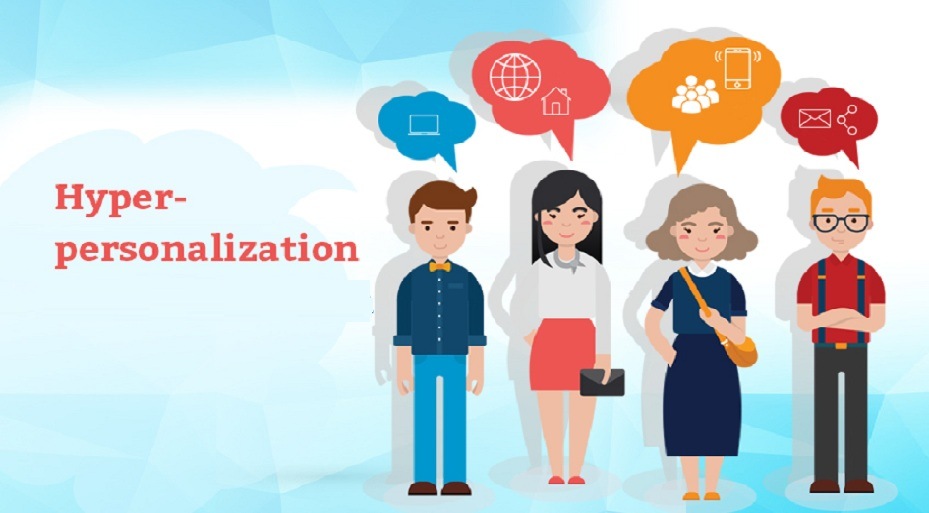The landscape of work has undergone a seismic shift in the aftermath of the COVID-19 pandemic. With remote work becoming the norm, and organizations embracing hybrid models, the demand for a highly skilled and adaptable workforce has surged. This paradigm shift has given rise to a talent shortage crisis, necessitating a fresh perspective on talent acquisition and development. In this article, we explore the need for hyper-personalized talent in the post-COVID world, where fluid roles and a scarcity of skills are reshaping the employment landscape.

1. The Era of Hybrid Roles:
As businesses adapt to the realities of a post-pandemic world, the concept of hybrid roles has gained prominence. Employees are expected to possess a diverse skill set that transcends traditional job boundaries. For instance, a marketing professional might be required to understand data analytics, while a software developer may need to grasp the fundamentals of customer engagement.
Example: Microsoft’s Adaptive Workforce:
Microsoft has been at the forefront of embracing hybrid roles. The tech giant encourages employees to explore and develop skills outside their core competencies. The company’s Adaptive Workforce program focuses on upskilling and reskilling employees, ensuring they are equipped to handle a range of tasks beyond their primary job functions. This approach not only enhances employee versatility but also addresses the talent shortage by creating a more adaptable workforce.
2. Talent Shortages:
The pandemic has accelerated digital transformation across industries, leading to an increased demand for professionals with digital and technological skills. However, this surge in demand has outpaced the rate at which the workforce is acquiring these skills, resulting in a significant talent shortage.
Example: IBM’s SkillsBuild Reignite:
IBM has recognized the urgency of addressing talent shortages in the digital era. Through its SkillsBuild Reignite program, the company collaborates with governments, non-profits, and other organizations to provide free, online learning resources. The program focuses on equipping individuals with the skills required for in-demand roles in areas such as data science, artificial intelligence, and cybersecurity. By actively contributing to skills development, IBM aims to bridge the talent gap and empower individuals for the jobs of the future.
3. The Hyperpersonalization Imperative:
In a world where one-size-fits-all solutions are increasingly obsolete, hyperpersonalization emerges as a key strategy for talent management. Organizations need to understand the unique strengths, aspirations, and learning styles of their employees to create tailored development paths.
Example: Deloitte’s MyPath:
Deloitte has embraced hyperpersonalization through its MyPath program. This initiative uses data analytics to assess the individual skills, preferences, and career goals of each employee. Based on this data, personalized learning plans are curated, enabling employees to upskill in areas directly relevant to their career aspirations. This approach not only addresses talent shortages by optimizing individual potential but also fosters a culture of continuous learning within the organization.
4. Fluid Roles and Adaptability:
The ability to adapt to rapidly changing circumstances is now a critical skill. The post-COVID world demands professionals who can seamlessly transition between roles, possess a blend of technical and soft skills, and are open to continuous learning.
Example: Amazon’s Career Choice Program:
Amazon’s Career Choice program exemplifies the importance of fluid roles and adaptability. The program, designed to upskill Amazon employees, provides access to training in high-demand fields, even if those skills are not directly related to their current roles within the company. By encouraging employees to explore different career paths, Amazon ensures a workforce that is not only versatile within the company but also valuable to the broader job market.
5. Real-time Feedback and Iterative Learning:
In the rapidly evolving business landscape, traditional performance reviews are insufficient. Real-time feedback and iterative learning processes are crucial for employees to stay relevant and contribute effectively.
Example: Accenture’s Continuous Performance Management:
Accenture has revolutionized its approach to performance management through its Continuous Performance Management system. This system emphasizes ongoing feedback, coaching, and goal setting, fostering a culture of continuous improvement. By providing real-time insights into employee performance and potential areas for development, Accenture ensures that its workforce remains agile and responsive to evolving business needs.
Conclusion:
The post-COVID world has brought about a tectonic shift in the way organizations perceive and nurture talent. The hyperpersonalization of skills, adaptation to hybrid roles, and a focus on addressing talent shortages have become paramount for success. Real-world examples from leading companies illustrate the importance of innovative approaches to talent management, emphasizing the need for continuous learning, adaptability, and personalized development paths.
As businesses navigate the complexities of the talent landscape, those that prioritize hyperpersonalized talent strategies will not only weather the challenges but also thrive in the dynamic and uncertain future of work. In this era of constant change, the ability to curate, cultivate, and capitalize on individual skills will be the defining factor for organizational resilience and success.











